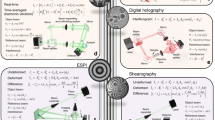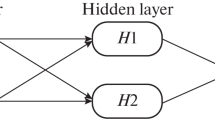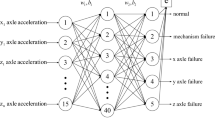Abstract
The article considers artificial intelligence as one of the main elements of digital transformation and promising directions of its application in metrology. The main attention is paid to the use of artificial neural networks as part of measuring instruments and measuring systems for obtaining measurement results in cases where the measurement function is unknown, insufficiently defined or too complex for algorithmic formalization. It is noted that in practice problems with a partially uncertain function, when, in addition to the deterministic basis, there is an additional unknown component that has a significant impact on the measurement result, often arise. A simulation experiment was carried out to solve such a measurement problem using a neural network model. In the experiment, a measurement function with a linear deterministic basis and an additional nonlinear component, which is approximately 10% of the relative standard deviation and is a priori unknown (according to the conditions of the problem), was used. The experimental results confirmed the practical possibility and high efficiency of using artificial neural networks to solve such measurement problems. The neural network model, under conditions of a noisy training dataset corresponding to real measurement conditions, almost completely restored the measurement function, despite the fact that the neural network model used was linear, and the additional component of the measurement function was nonlinear. In this experiment, due to the use of a neural network, the accuracy of measurements was improved by approximately an order of magnitude. Access to the machine code that implements this simulation experiment is provided.




Similar content being viewed by others
References
Schwab, K.: The Fourth Industrial Revolution. Currency Books, New York (2017)
Kroshkin, A.N., Lishchuk, A.N.: A new technology of non-separated measurement of oil well production [in Russian]. Avtomatiz. Promysh. (5), 25–29 (2014)
Goodfellow, I., Bengio, Y., Courville, A.: Deep Learning. MIT Press, Cambridge (2016)
Henry, M., Tombs, M., Zamora, M., Zhou, F.: Coriolis mass flow metering for three-phase flow: A case study. Flow Meas. Instrum. 30, 112–122 (2013)
Kostarev, K.G., Torohova, S.V.: Contraction of aqueous solutions of alcohols, salts acids and bases [in Russian]. Vestn. Perm. Univ. Fiz. (1), 5–15 (2022)
Mendeleev, D.I.: The Reasoning Behind Combining Alcohol and Water [in Russian]. Obshchestvennaya Pol’za, St. Petersburg (1865)
Kapustin, V.M., Chernysheva, E.A., Glagoleva, O.F.: Non-additive changes of properties of hydrocarbon systems while mixing [in Russian]. Neftepererab. Neftekhim. (4), 3–9 (2017)
Yu, A.: Smyshlyaeva, E. D. Ivanchina, A. V. Kravtsov, et al.: Development of a database of octane numbers for a mathematical model of the compounding process of commercial gasoline [in Russian]. Izv. Tomsk. Politekh. Univ. 318(3), 75–80 (2011)
Gafarov, F.M., Galimyanov, A.F.: Artificial Neural Networks and Applications [in Russian]. Izd-vo Kazanskogo Universiteta, Kazan (2018)
Gulli, A., Pal, S.: Deep Learning with Keras. Implementing Deep Learning Models and Neural Networks with the Power of Python. Packt Publishing, Birmingham (2017)
Author information
Authors and Affiliations
Corresponding author
Ethics declarations
Conflict of interest
The authors declare no conflict of interest.
Additional information
Translated from Izmeritel’naya Tekhnika, No. 9, pp. 66–72, September, 2023. https://doi.org/10.32446/0368-1025it.2023-9-66-72
Publisher’s Note
Springer Nature remains neutral with regard to jurisdictional claims in published maps and institutional affiliations.
Original article submitted on May 22, 2023. Accepted on August 10, 2023.
Rights and permissions
Springer Nature or its licensor (e.g. a society or other partner) holds exclusive rights to this article under a publishing agreement with the author(s) or other rightsholder(s); author self-archiving of the accepted manuscript version of this article is solely governed by the terms of such publishing agreement and applicable law.
About this article
Cite this article
Kuzin, A.Y., Kroshkin, A.N., Isaev, L.K. et al. Practical aspects of applying artificial intelligence in metrology. Meas Tech 66, 717–727 (2023). https://doi.org/10.1007/s11018-024-02285-2
Published:
Issue Date:
DOI: https://doi.org/10.1007/s11018-024-02285-2
Keywords
- Artificial intelligence
- Artificial neural network
- Measurement function
- Training dataset
- Standard uncertainty




